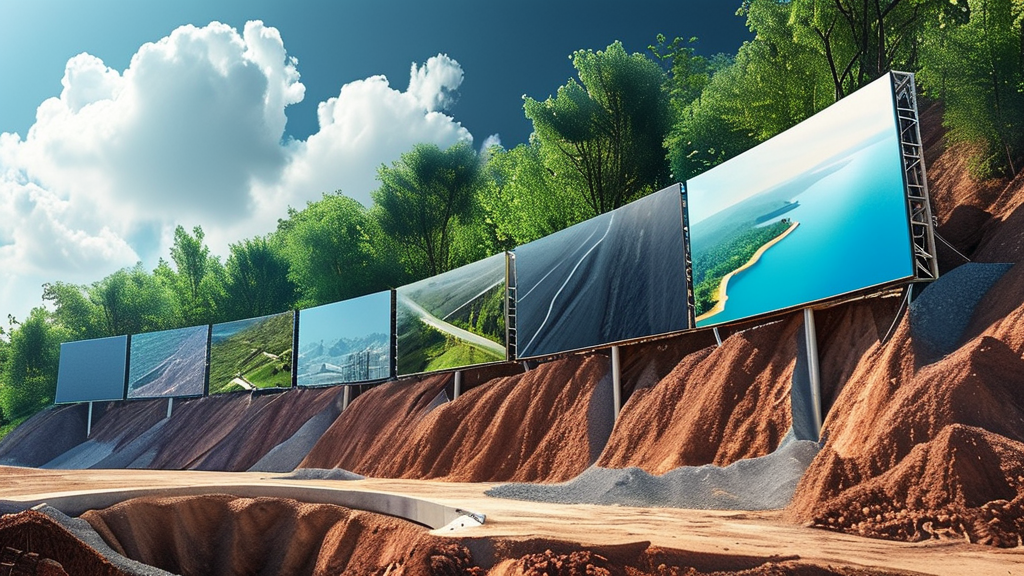Outdoor screen installation must learn: from the foundation buried to the system commissioning of the 10 key steps

First, scientific installation to lay the foundation for operation and maintenance
The installation stage of LED outdoor screen directly affects the performance of the whole life cycle of the equipment. In the site selection and evaluation of the link should focus on the consideration of environmental illuminance (recommended ≤ 5000lux), viewing angle (horizontal 160 ° / vertical 120 ° is good) and safe viewing distance (pixel spacing mm × 1000). The foundation construction must meet the requirements of wind resistance, coastal areas need to meet the standard of Grade 12 typhoon, and the depth of pre-embedded ground bolts should be greater than 1/5 of the height of the screen body.
1.1 Structural safety and security
The frame is made of Q235B steel, the spacing of columns is not more than 2.5 meters, and the angle of diagonal support of back frame is controlled at 45-60°. The waterproof treatment should reach IP65 standard, and the junction box uses silicone sealing ring with 704 adhesive double protection. The power supply wiring implements a three-stage lightning protection system, with grounding resistance ≤ 4Ω, and the voltage difference between phases is controlled within ±5%.
1.2 Display unit commissioning
Module splicing gap ≤ 0.1mm, brightness uniformity ≥ 95%, color temperature deviation control in ± 150 K. Adopt point-by-point correction technology, Gamma value set in the range of 2.2-2.4, the first aging test needs to be continued for more than 72 hours.
Second, intelligent operation and maintenance to ensure long-term operation
Routine maintenance should establish a three-tier inspection system: daily inspection (remote monitoring), weekly inspection (on-site inspection), quarterly inspection (professional maintenance). Environmental sensors monitor real-time temperature (operating range -30℃~+60℃), humidity (30%-70%RH), dust concentration (PM2.5<75μg/m³).
2.1 Dust and dehumidification specifications
Clean the cooling air ducts monthly in the northern region, the humid environment in the south needs to be configured with dehumidification devices to maintain relative humidity ≤ 65%. Use special cleaning agents (PH value 6.5-7.5) with nano-coating technology, cleaning frequency is recommended: every 15 days in the transportation hub / times, the commercial area every month / times.
2.2 Fault warning system
Deploy intelligent monitoring platform to detect power supply efficiency (≥85%), LED decay rate (annual decay <3%), communication BER (<0.01%) in real time. Establish a fault code library, covering 32 types of common problems, supporting remote diagnosis and spare parts prediction.
III. Upgrading to extend the life cycle
Retrofit should be initiated when the brightness decays to the initial value of 70% or the color reproduction <90%. Adopt modularized design, support SMD to COB technology transition. The control system is upgraded to be compatible with HDR10+ standard, the refresh rate is increased to 3840Hz, and the gray level is extended to 16bit.
3.1 Energy Efficiency Optimization Program
Implementation of dynamic power-saving technology, automatic adjustment of brightness according to ambient light (200-6000cd/m² adjustable), with intelligent power management, energy consumption is reduced by more than 40%. The heat dissipation system is upgraded to a liquid-cooling circulation device, which reduces the working temperature by 8-12℃.
3.2 End-of-life recycling specifications
Strict implementation of WEEE standards, aluminum recycling rate >95%, PCB board precious metal extraction rate >98%. waste LED particles can be reused as road reflective materials after crushing treatment, realizing the resource recycling rate ≥85%.

